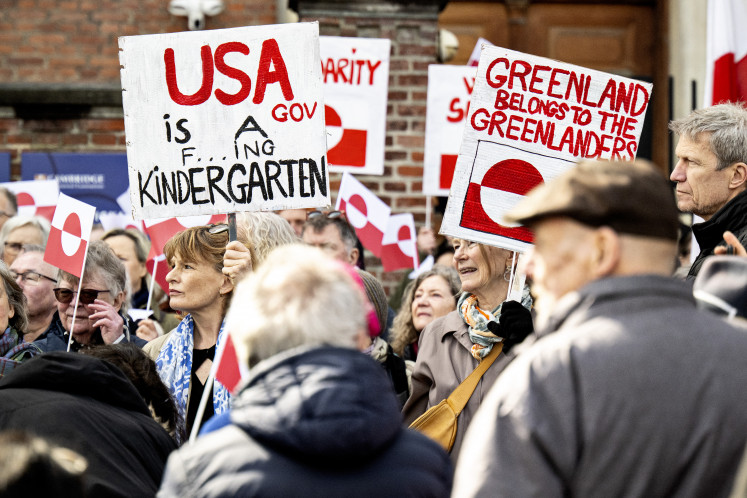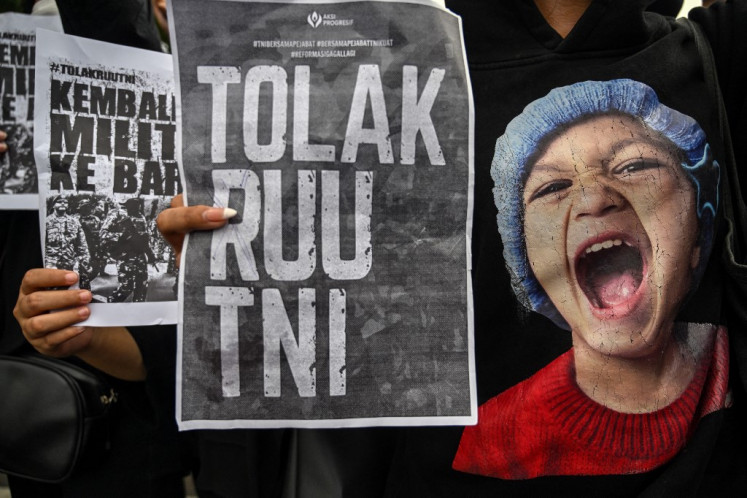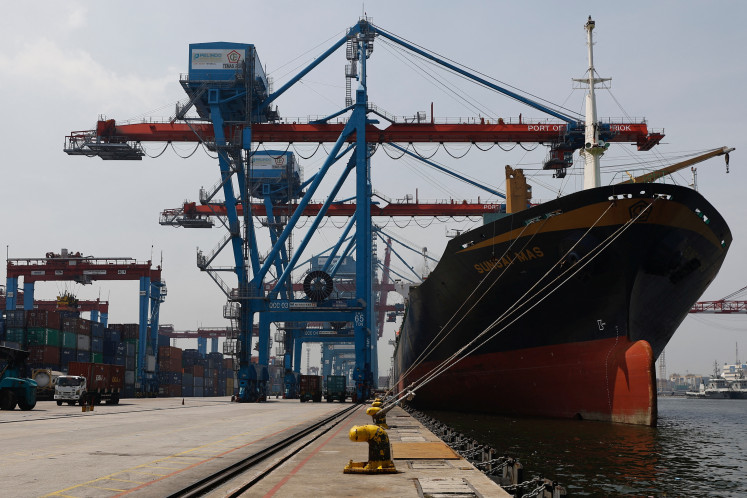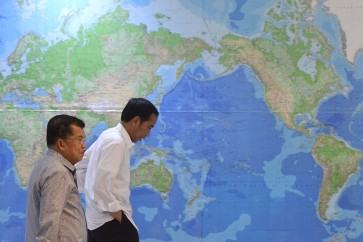INSIGHT: In Indo-Pacific strategic flux, where is Indonesia?
Five elements now define the strategic flux taking place in the Indo-Pacific.
Change text size
Gift Premium Articles
to Anyone
 President Joko “Jokowi” Widodo’s global maritime fulcrum doctrine (GMF) has yet to be enshrined in a full-fledged policy document since its enunciation in 2014. (Antara/Rosa Panggabean)
President Joko “Jokowi” Widodo’s global maritime fulcrum doctrine (GMF) has yet to be enshrined in a full-fledged policy document since its enunciation in 2014. (Antara/Rosa Panggabean)
T
he recent resignation of United States President Donald Trump’s national security adviser, retired general Michael Flynn, is both unprecedented and not surprising given the administration’s frenzied start.
The gung-ho surrounding his resignation came on the heels of a relatively good week for Asia policy; Trump reaffirmed the longheld One China policy and backed Japan after Pyongyang launched another missile test. But it seems likely that lunging from one crisis to another might be the new normal for American foreign policy.
This does not bode well for the Indo-Pacific — which scholars see as the strategic system linking the Western Pacific and the Indian Ocean region, where the US remains part of the equation alongside China and India as well as Japan, Australia and Indonesia.
Five elements now define the strategic flux taking place in the Indo-Pacific.
One, America spiraling into uncertainty under Trump, whose belief in transactional bilateralism will marginalize ASEAN and send allies and partners scrambling for a steady hand. Not to mention the pandemonium that comes from not knowing who to listen to — is it Steve Bannon, or secretaries Tillerson and Mattis?
Two, China’s increasingly hegemonic behavior without fully taking on the responsibilities of maintaining regional order beyond hollow economic projects, especially given Beijing’s domestic concerns. Flashpoints in disputed maritime domains are only one out of many concerns over an emerging Pax Sinica, whether by default or by design.
Three, the growing profiles of India, Japan, and Australia, whether individually or in concert with the US, at a time when multilateralism is becoming an afterthought. Driven by the two signs above, these powers are seeking to hedge their strategic future in their own ways — possibly putting them on a zero-sum slippery slope.

















